
Military gliders have been used by the militaries of various countries for carrying troops and heavy equipment to a combat zone, mainly during the Second World War. These engineless aircraft were towed into the air and most of the way to their target by military transport planes, e.g., C-47 Skytrain or Dakota, or bombers relegated to secondary activities, e.g., Short Stirling. Most military gliders do not soar, although there were attempts to build military sailplanes as well, such as the DFS 228.
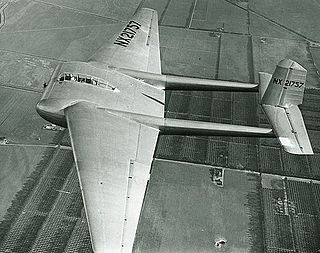
The XCG-16 was a military transport/assault glider ordered by the United States Army Air Forces (USAAF), from General Airborne Transport Co., for competition against the Waco CG-13A at Wright Field. The XCG-16’s preferred tow aircraft was the Lockheed Model 18 Lodestar.

The National Soaring Museum (NSM) is an aviation museum whose stated aim is to preserve the history of motorless flight. It is located on top of Harris Hill near Elmira, New York, United States.
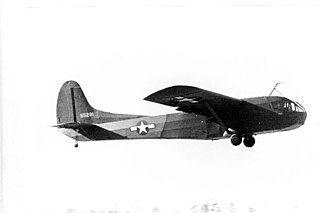
The Waco CG-15 was an American military glider, which was developed from the CG-4. Although outwardly similar to its predecessor and carrying the same number of passengers, a number of changes in the design, including shortened wings and a more streamlined nose enabled it to travel faster. 1,000 were ordered and 473 were delivered before production ceased. Two were transferred to the Navy for testing as the XLR2W-1. One unit was converted into an XPG-3 powered glider which used two Jacobs R-755-9 radial engines.

William Hawley Bowlus was an American designer, engineer and builder of aircraft and recreational vehicles in the 1930s and 1940s. Today he is most widely known for his creation of the world's first aluminum travel trailer, the Bowlus Road Chief, which Airstream imitated in 1936 to create the Clipper. This followed his prior famed work as the Superintendent of Construction on Charles Lindbergh's aircraft, the Spirit of St. Louis. He also designed and constructed the innovative but unsuccessful XCG-16A experimental military glider ordered by the U.S. Army Air Corps in 1943, appearing as XCG-16 in the list of Vincent Burnelli airplanes. In popular culture he is usually referred to as Hawley Bowlus.
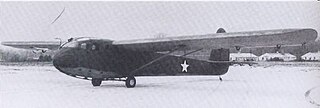
The Waco CG-3A was a United States light troop military glider of World War II.

The Waco CG-4 was the most widely used American troop/cargo military glider of World War II. It was designated the CG-4A by the United States Army Air Forces, and given the service name Hadrian by the British.

The Waco CG-13 was an American military transport glider aircraft developed during World War II.
The St. Louis CG-5 was a 1940s American prototype military transport glider designed and built by the St. Louis Aircraft Corporation.
The Nelson Aircraft Corporation was founded in 1945 by sailplane pilot Ted Nelson and sailplane designer William Hawley Bowlus in San Fernando, California.
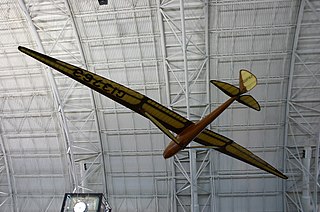
The Bowlus 1-S-2100 Senior Albatross was a 1930s single-seat glider designed by William Hawley Bowlus for Bowlus Sailplane Company Ltd. The aircraft is based on a prototype glider the "Super Sailplane" designed by Bowlus, and instructor Martin Schempp, built by students at the Curtiss-Wright Technical Institute.

The Bowlus BA-100 Baby Albatross is an American high-wing, strut-braced, open cockpit, pod-and-boom glider that was designed by Hawley Bowlus and introduced in 1938.

The Bowlus BS-100 Super Albatross is a single seat, mid-wing glider that was designed by Hawley Bowlus in 1938.

The Bowlus/Nelson BB-1 Dragonfly is an American, two seat, strut-braced, high-wing motor glider that was developed from the Bowlus BA-100 Baby Albatross glider by Hawley Bowlus.
The Frankfort CG-1 was a proposed Second World War American transport glider to be built for the United States Army, none were built and the programme was cancelled.
The Bowlus CG-8 was a prototype Second World War American transport glider to be built for United States Army, one was built but the type did not enter production and the programme was cancelled.
The Bowlus CG-7 was a prototype Second World War American transport glider to be built for United States Army, one was built but the type did not enter production and the programme was cancelled.
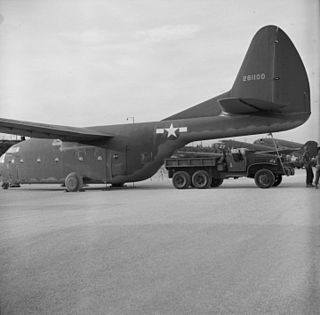
The Laister-Kauffman CG-10 was an American military transport glider aircraft developed during World War II.
The AGA Aviation CG-9, company designation AGA Aviation G.5 was a proposed Second World War American transport glider to be built for the United States Army Air Force (USAAF), none were built and the programme was cancelled.
This page is based on this
Wikipedia article Text is available under the
CC BY-SA 4.0 license; additional terms may apply.
Images, videos and audio are available under their respective licenses.











